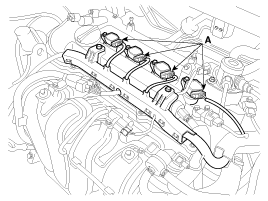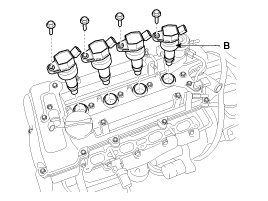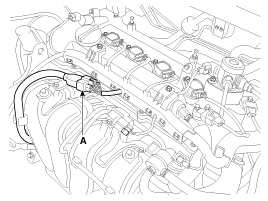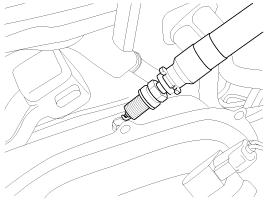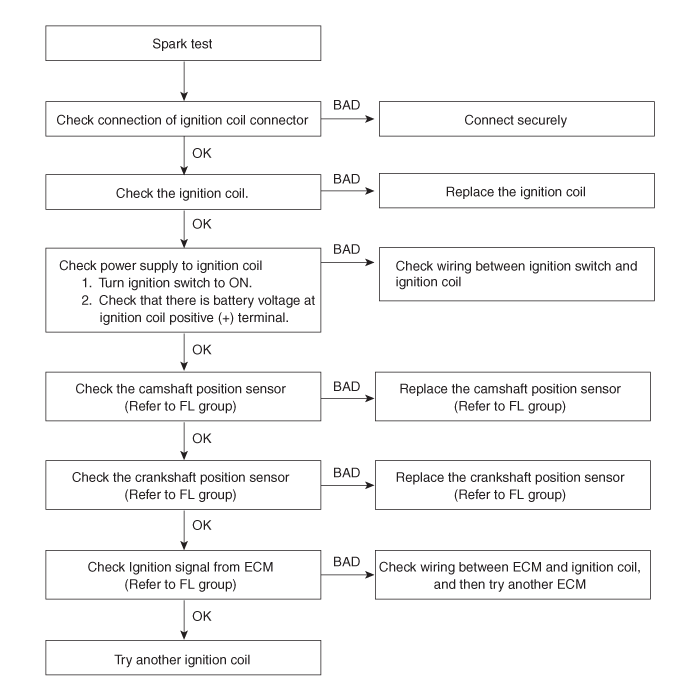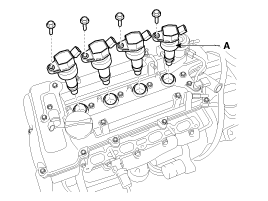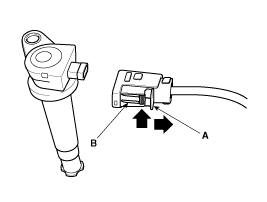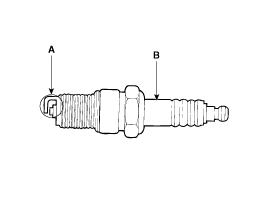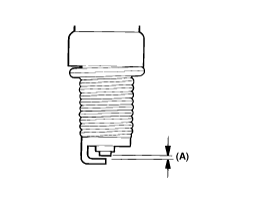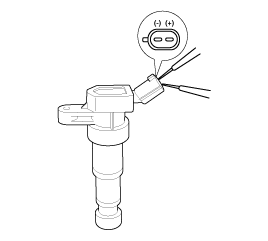 Hyundai Accent: Repair procedures
Hyundai Accent: Repair procedures
Hyundai Accent RB (2010-2018) Service Manual / Engine Electrical System / Ignition System / Repair procedures
On-vehicle Inspection
| Spark Test |
| 1. |
Disconnect the connectors (A) and then ignition coils
(B).
|
| 2. |
Disconnect the injector extension connector for fuel
not to be injected while checking.
|
| 3. |
Using a spark plug socket, remove the spark plug.
|
| 4. |
Install the spark plug to the ignition coil.
|
| 5. |
Ground the spark plug to the engine.
|
| 6. |
Check if spark occurs while engine is being cranked.
|
| 7. |
Inspect all the spark plugs.
|
| 8. |
Using a spark plug socket, install the spark plug.
|
| 9. |
Install the ignition coil.
|
| 10. |
Reconnect the ignition coil connector.
|
Inspect Spark Plug
| 1. |
Remove the ignition coils (A).
|
| 2. |
Using a spark plug socket, remove the spark plug.
|
| 3. |
Inspect the electrodes (A) and ceramic insulator
(B).
Inspection Of Electrodes
|
| 4. |
Check the electrode gap (A).
|
Inspect Ignition Coil
| 1. |
Measure the primary coil resistance between terminals
(+) and (-).
|
 Description and Operation
Description and Operation
Description
Ignition timing is controlled by the electronic control ignition
timing system. The standard reference ignition timing data for the engine operating
conditions are pre-programmed ...
 Charging System
Charging System
...
See also:
Pre-tensioner seat belt
Your vehicle is equipped with driver's and front passenger's pre-tensioner seat
belts. The purpose of the pre-tensioner is to make sure that the seat belts fit
tightly against the occupa ...
General Service Information
Protection Of The Vehicle
Always be sure to cover fenders, seats, and floor areas before
starting work.
The support rod m ...
Push-starting
Your manual transaxle-equipped vehicle should not be push-started because it
might damage the emission control system.
Vehicles equipped with automatic transaxle cannot be push-started. Follow the ...
Hyundai Accent Manuals
- Hyundai Accent 2017-2022 Service Manual
- Hyundai Accent 2010-2025 Owners Manual
- Hyundai Accent 2010-2025 Service Manual
В© 2011-2025 Copyright www.hamanual.com

